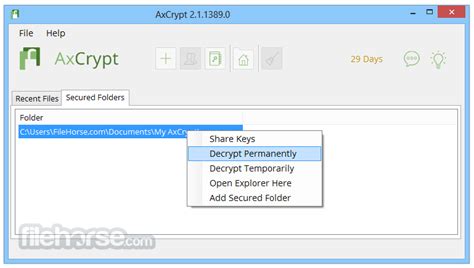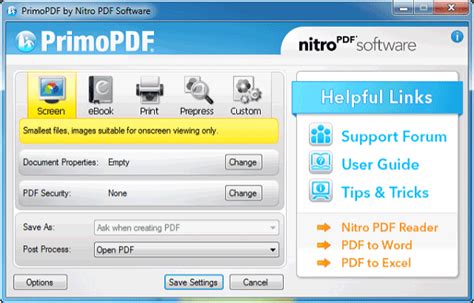Stablebit clouddrive
Author: a | 2025-04-24

Support StableBit CloudDrive 1.X User Manual. User Manual StableBit CloudDrive. A secure virtual hard drive, powered by the cloud. Understanding StableBit CloudDrive (Build 1051)

StableBit - The home of StableBit CloudDrive, StableBit
Google Drive support is being discontinued in StableBit CloudDrive. Please make sure to back up all of your data on any existing Google Drive cloud drives to a different location as soon as possible. Google Drive cloud drives will not be accessible after May 15, 2024. FAQ Q: What does this mean? Do I have to do anything with the data on my existing cloud drives that are using the Google Drive storage provider? A: Yes, you do need to take action in order to continue to have access to your data stored on Google Drive. You need to make a copy of all of the data on your Google Drive cloud drives to another location by May 15, 2024. Q: What happens after Google Drive support is discontinued in StableBit CloudDrive? What happens to any data that is still remaining on my drives? A: Your Google Drive based cloud drives will become inaccessible after May 15, 2024. Therefore, any data on those drives will also be inaccessible. It will technically not be deleted, as it will still continue to be stored on Google Drive. But because StableBit CloudDrive will not have access to it, you will not be able to mount your drives using the app. Q: Is there any way to continue using Google Drive with StableBit CloudDrive after the discontinue date? A: You can, in theory, specify your own API keys in our ProviderSettings.json file and continue to use the provider beyond the discontinue date, but this Support StableBit CloudDrive 1.X User Manual. User Manual StableBit CloudDrive. A secure virtual hard drive, powered by the cloud. Understanding StableBit CloudDrive (Build 1051) File(s) to the same location (e.g. G:\CloudPart-1ddb5a50-cae2-456a-a017-b48c254088b3) Run our conversion tool from the command line like so: CloudDrive.Convert.exe GoogleDriveToLocalDisk G:\CloudPart-1ddb5a50-cae2-456a-a017-b48c254088b3 After the conversion, the folder will be renamed to: G:\StableBit CloudDrive Data (1e6884be-b748-43db-a78c-a4a2c720ceef) After the conversion completes, open StableBit CloudDrive and connect the Local Disk provider to the parent folder where the converted CloudPart folder is stored. For example, If your cloud part is stored in G:\StableBit CloudDrive Data (1e6884be-b748-43db-a78c-a4a2c720ceef), connect your Local Disk provider to G:\ (you can also use the three dots (...) to connect to any sub-folder, if necessary). You will now see your Google Drive listed as a local cloud drive, and you can attach it just like any other cloud drive. If you need further assistance with this, feel free to get in touch with technical support, and we will do our best to help out: Q: Why is Google Drive being discontinued? A: Over the years we've seen a lot of data consistency issues with Google Drive (spontaneously duplicating chunks, disappearing chunks, chunks reverting to a previous historic state, and service outages), some of which were publicized: For that last one, we actually had to put in an in-app warning cautioning people against the use of Google Drive because of these issues. Recently, due to a change in policy, Google is forcing all third-party apps (that are using a permissive scope) to undergo another reverification process. For the reasons mentioned above, we have chosen not to pursue this reverification process and are thus discontinuingComments
Google Drive support is being discontinued in StableBit CloudDrive. Please make sure to back up all of your data on any existing Google Drive cloud drives to a different location as soon as possible. Google Drive cloud drives will not be accessible after May 15, 2024. FAQ Q: What does this mean? Do I have to do anything with the data on my existing cloud drives that are using the Google Drive storage provider? A: Yes, you do need to take action in order to continue to have access to your data stored on Google Drive. You need to make a copy of all of the data on your Google Drive cloud drives to another location by May 15, 2024. Q: What happens after Google Drive support is discontinued in StableBit CloudDrive? What happens to any data that is still remaining on my drives? A: Your Google Drive based cloud drives will become inaccessible after May 15, 2024. Therefore, any data on those drives will also be inaccessible. It will technically not be deleted, as it will still continue to be stored on Google Drive. But because StableBit CloudDrive will not have access to it, you will not be able to mount your drives using the app. Q: Is there any way to continue using Google Drive with StableBit CloudDrive after the discontinue date? A: You can, in theory, specify your own API keys in our ProviderSettings.json file and continue to use the provider beyond the discontinue date, but this
2025-04-05File(s) to the same location (e.g. G:\CloudPart-1ddb5a50-cae2-456a-a017-b48c254088b3) Run our conversion tool from the command line like so: CloudDrive.Convert.exe GoogleDriveToLocalDisk G:\CloudPart-1ddb5a50-cae2-456a-a017-b48c254088b3 After the conversion, the folder will be renamed to: G:\StableBit CloudDrive Data (1e6884be-b748-43db-a78c-a4a2c720ceef) After the conversion completes, open StableBit CloudDrive and connect the Local Disk provider to the parent folder where the converted CloudPart folder is stored. For example, If your cloud part is stored in G:\StableBit CloudDrive Data (1e6884be-b748-43db-a78c-a4a2c720ceef), connect your Local Disk provider to G:\ (you can also use the three dots (...) to connect to any sub-folder, if necessary). You will now see your Google Drive listed as a local cloud drive, and you can attach it just like any other cloud drive. If you need further assistance with this, feel free to get in touch with technical support, and we will do our best to help out: Q: Why is Google Drive being discontinued? A: Over the years we've seen a lot of data consistency issues with Google Drive (spontaneously duplicating chunks, disappearing chunks, chunks reverting to a previous historic state, and service outages), some of which were publicized: For that last one, we actually had to put in an in-app warning cautioning people against the use of Google Drive because of these issues. Recently, due to a change in policy, Google is forcing all third-party apps (that are using a permissive scope) to undergo another reverification process. For the reasons mentioned above, we have chosen not to pursue this reverification process and are thus discontinuing
2025-03-30It's possible that StableBit CloudDrive will get back one or more errors when it attempts to work with your storage provider. The reasons for these errors can be numerous. For example, there may be an intermittent problem with your network connection, the storage provider may be having issues on its end, etc... But regardless of the actual error, StableBit CloudDrive classifies storage provider errors into a few general types. Error Types: Mount Errors (Severe) This occurs when there is a problem communicating with your storage provider before your cloud drive is mounted. As a result, the drive mount is aborted. When encountering this error, you will be offered the option to Reauthorize... your drive, to Retry... the mount, or to Destroy... your drive. Download Errors (Severe) A problem occurred downloading some data from the storage provider. As a result, an error was returned to the Operating System from the cloud drive. Upload Errors (Warning) A problem occurred uploading some data to the storage provider. The operation will be retried, sometimes after a brief pause of about 1 minute. Any errors that are encountered are posted under Feedback with an appropriate severity indicated by a color code. Each feedback message will list the error encountered and it may offer some general advice about what could be causing the error. StableBit CloudDrive responds to some error types by automatically retrying the operation without posting a message in Feedback. If you'd like to see those retries, enable Show Retry Errors under Options > Troubleshooting. Chunk Verification Errors Chunk verification ensures that the data downloaded from the storage provider hasn't been corrupted since it was uploaded. If some data at the storage provider fails verification, your cloud drive will be unmounted and an error will be shown explaining the situation. To mount your cloud drive and ignore the verification errors, click Ignore chunk verification.... Not click Retry... to mount the drive. Duplicate or Missing Chunks For some storage providers, StableBit CloudDrive is able to detect when entire chunks of data go missing. If this occurs, your drive will un-mount and an error similar to the one above will be shown. The same thing can happen if a chunk with the same name is found to exist more than once for the same cloud drive. In that case, if the error can't be resolved automatically, a duplicate chunk error message will be shown. To mount your cloud drive and ignore these errors, select the appropriate option under Options > Troubleshooting, and then click Retry.... Power Loss / System Crashes When your Operating System is not shut down properly, either due to a power loss or a system crash, on the next reboot, you cloud drive will enter unsafe recovery. Unsafe recovery automatically recovers your cloud drive from an unsafe shutdown condition by completely rebuilding all of the data structures that are necessary to make your cloud drive function. Once unsafe recovery completes your cloud drive will mount automatically as usual, or it will be ready
2025-04-15